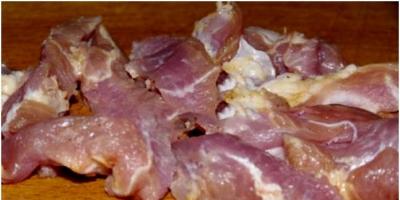Probably everyone wants to achieve some bright and saturated colors of paints, and sometimes it is necessary to give a certain shade of paintwork. For such purposes, paint colors are used. Today I will tell you how to do tinting with your own hands and at home. After all, we often need to achieve a color that you simply cannot buy in a store, since it consists of several tones. The most interesting thing is that the color can be used not only for diluting paint, but also as a ready-made mixture for painting small surfaces. And today we will look at all aspects of this material.
Colors for paint
Varieties of pigments

I must say that now it’s very easy to choose the right color for your type of paint. Manufacturers present a wide range of pigmenting compounds that can be used independently. By the way, color can be added not only to paintwork materials, but also to plaster or putty, thereby giving it the necessary colors.
Important! When choosing the required pigment in the store, consider what kind of lighting will be in the room. The fact is that painted surfaces may have different shade. Artificial lighting will make cold colors muted and dark, but warm colors will brighten.
Table of proportions for mixing paints and colors:
When mixing colors and paints and varnishes, do not overdo it. While this may result in richer colors, it may simply reduce the quality and properties of the paint.
If we talk about GOST, then the colors are:
- Organic – the advantage of these is the presence of a bright and rich color. However, these compounds are very unstable to alkali.
- Inorganic - they have little color variety, but they are quite lightfast
Classification of materials

In order to understand which colors are suitable for certain types of paint, I decided to create a small but understandable table:
Important! Water-based paint is the most popular for use in private houses and apartments. That is why one of the most popular colors for paints can be safely called water based.
Consider some factors if you want to get the water-based paint colors you want:
- Immediately calculate how much coloring composition you will need
- Immediately look through the manufacturer’s catalogs, they indicate the color of the material and ready-made shades
- If you want to mix several shades and get some complex color, then be sure to use mixing tables
- When trying out new shades and colors, you shouldn’t immediately mix buckets of paint, try mixing a small amount of material and see the result. After this, you can safely mix a whole bucket of paint and varnish
- After mixing a small amount of the color you require, apply it to the surface and wait for the paint to dry. After that, look at the result
- A special attachment for the drill will help you thoroughly mix the entire mixture to the desired consistency. Only a good mix can achieve the desired result.
- Do not forget that before applying the mixture to the surface, you need to stir it again.
Important! Although mixing paint and color is not difficult, you can use this service in hardware store. The idea is that many specialty stores have special automated machines that allow you to mix the paint to the shade you need. In this case, you won’t have to worry about the resulting color.
The price of such a composition is slightly higher than paint mixed with your own hands - this is worth taking into account when predicting your costs for color and paintwork.
DIY tinting

Adding red color
The mixing technology is very simple and does not require any special skills. A beginner who has no experience in painting surfaces can handle this task quite well. Do-it-yourself paint tinting is done when you want to paint a room in several different colors. Do not forget that the colors must be compatible with each other.
The sad thing about this process is that you won’t be able to mix the same shade twice in a row, so immediately calculate how much mixture you will need for coloring. The sequence of the process is very simple, take the color, add it to the white paintwork material and mix. However, keep some details in mind:
- Use only one container for mixing - there is a possibility that in different containers the color will turn out different
- Keep track of the percentage of materials - if you go too far with the color, you can lose the desired qualities, and if you add less than required, you will not achieve the desired shade
- Immediately calculate the amount of material used - you won’t be able to get the same color twice
- Don't forget to do a test batch large quantities paints - by mixing the whole mixture at once, you can ruin the material without achieving the desired color scheme
- Take your time to mix and apply the solution - the well-known proverb applies even in this case
By the way, if you have some color left and no longer need to use it, then do not rush to throw away the material. Take a container of color and add a small amount of water, but do not mix or shake the container. After this trick, you can store the color for up to five years. To obtain the most saturated shade, mix the pigment mixture and paint before applying to the walls - this can happen a couple of hours before painting.
When you mix the color you need in advance, that is, more than 3-4 hours before painting, there is a very high probability that the color will settle a little and therefore the resulting shade will not be as rich as initially.
Results

There is no need to worry at all before you start tinting the materials you need. If you are not sure that you will get the right color the first time, then by writing down the proportions and steps, you can experiment in small containers. For those who do not want to waste their time, there are automated machines that can mix the shade you need. Take into account all the nuances when using color, and then you will get the shade you need.
The use of colorants or coloring pigments allows you to obtain any surface color. You can use the service offered by construction markets. Paint tinting is an opportunity to prepare construction material immediately before work. The disadvantage of manual tinting is that if the resulting composition is not enough, it will be extremely difficult to obtain exactly the same shade.
Material selection
You can get a new color in two ways - glazing, tinting. Glazing is mixing two colors of paint to create a third. For example, red plus blue makes purple. Tinting - paint white a coloring agent is added.
There are several rules that must be followed when tinting paint:
- Colorants must be from the same manufacturer as the paint.
- The color should be selected according to the lighting of the room where the painted surface will be used.
Note! The basis should be not just white, but snow-white paint. Only in this case can you achieve the required shade. For the walls, choose paint “for the walls”, for the ceiling – “for the ceiling”. These materials are not interchangeable!

The use of organic compounds allows you to obtain a wide range bright colors. But under the influence of UV they are destroyed. Colorants based on synthetic materials make it possible to obtain a substance that is resistant to atmospheric conditions. The disadvantage of synthetic materials is the limited range of shades.
- Color paints. In their composition, they are close to the coloring liquids for which they are intended - water-based, oil-based, acrylic, etc.
- Pastas. They can be universal or designed for a specific type of paint. If there is no binding component in their composition, the proportions must be strictly observed. For water-based materials - their volume should not exceed 20%, for oil-based materials - 1.5%, for others - 5% - 7%.
- Powder. To achieve its uniform dissolution, you first need to prepare a working solution based on the substance used - water, solvent, drying oil, etc. Before use, the solution must be filtered.
It is better to purchase tinting liquids packaged in bottles with a narrow neck or syringes. Pigment pastes and powders are more suitable for mixing by tinting machines.
Before purchasing any type of paint tinting pigment, you should carefully read the instructions that come with it.
There are special tinting compounds for varnishes. They give these materials mother-of-pearl, copper, gold and other metallic shades.
Stages

First you need to get “samples”.
- Paint is diluted in small jars with the addition of a few drops of pigment. Moreover, the amount of materials used is recorded.
- Then a small area is painted with the colors you like. work surface. Once dry, it is evaluated under all types of lighting.
- The required shade is determined experimentally.
- The material is prepared in the required volume.
Note! When preparing, the coloring composition is stirred, not whipped.
Manual tinting is convenient to use only when painting small areas.
If you need to carry out large-scale painting work, it is better to take advantage of technical advances. But it is necessary to take into account that when choosing a color in a construction market on a small sample under artificial lighting, it is easy to make a mistake in tone. It is better to have your own sample of the desired shade with you - a piece of wallpaper or fabric.
Video
This is how professional tinting is done:
Despite the huge selection of different paint shades that manufacturers currently offer, the picky consumer is not always able to find what he needs. In this case, you can create the desired shade for yourself yourself and enjoy the chosen color.
Let's first understand the concept of tinting and color. The concept of “color” has several meanings in various areas. The so-called “folk” meaning of this term means specific color or shade, and experts call color a composition that is ready for use.
Tinting is a process where paint is mixed or thinned, the purpose of this process is to achieve the desired shade of color.
You can do the tinting yourself or, if you doubt it, own strength, you can order ready-made tinting from a company that specializes in this.
In what cases is it necessary to perform tinting? It is performed if:
- It is necessary to select a shade in accordance with the design of the apartment.
- A small piece of the painted surface has become unusable, and there is no point in repainting the entire surface.
- During the renovation, you made a mistake in calculating the required amount of paint, and now you cannot find the shade you need on sale.
- Choose shades that will harmonize.
Thanks to tinting, a small cosmetic repair will be a successful replacement for the front of intricate painting work.
 Currently, there are several types of tinting.
Currently, there are several types of tinting.
Computer tinted paint
First, let's look at computer tinting. This is a version of our modernity. What is it? You choose the shade that you need, and using a specially created program, you can easily calculate the amount of paint and dye that you will need. With the computer method, you are not limited in the amount of paint. This method is unique.
It has the following advantages:
- the tinting produced will be accurate and fast;
- you can tint any type of paint.
Manual tinting
There is also traditional hand tinting. Of course, this method will not give you the same clear results as the computer method. To carry out manual tinting, you purchase white paint and tinting paste. The more tinting paste you add, the more intense the resulting shade will be.
The manual method has its advantages:
- you can do the tinting yourself;
- it is convenient and economically beneficial.
But using manual tinting, you will not achieve dark, rich colors. And also, if you need additional paint of a similar shade, then you are unlikely to be able to exactly repeat your result.
Pay attention to the lighting in your apartment - it will certainly have an impact on the shade you choose. So, if the lighting is artificial, then any shade you choose will have a yellowish tint. Daylight will give a more realistic picture. All your interior items will be reflected in tinted color.
Cool colors in artificial light will appear one shade darker. It's green, blue. Orange and yellow, on the contrary, will seem lighter to you. If your interior contains some bright objects (furniture, textiles), then the selected monotonous colors will fade against their background and get lost.
Also keep in mind that paint applied to a small area and a large area will seem different in shade to you. Especially if you apply it vertically. Based on all this, before you settle on any shade, take into account all the features of your room.

But such pigments have the following disadvantages:
- not every surface can be coated with this composition;
- paint with such pigments is short-lived; under sunlight it will fade over time.
Colors with inorganic pigments have a limited color range, but they are not afraid of the influence of atmospheric phenomena.
The production of colorants is carried out in different versions:
- pastes,
- paints,
- dry mixes.
The paste contains dispersing resins; it is also possible to have a type of paste where there is no substance used for bonding.
There are pastes different types- there are universal pastes that are suitable for any paint, and there are specialized pastes designed for specific paint materials. The pastes are easy to use; when mixing, you can easily adjust the desired shade. But they have disadvantages: the pastes do not have formal properties of color and saturation. The final shade may be unexpected for you.
The composition of the color paint does not differ from paint and varnish materials for which they are used:
- water emulsions,
- acrylic,
- oil
- others.
By combining white paint and pigments, you will get the color you need. If you need a very bright and saturated color, then the existing colorant does not need to be diluted.
The advantage of dry compounds is their low price. But the color range of such pigments is very narrow, and correcting the desired shade is very difficult, since such pigments should not be added to a color mixture that is ready for use.
 What you will need for this process is a container of the mixture, a drill with an attachment, a small reservoir for placing a test portion, white base paint, and color scheme.
What you will need for this process is a container of the mixture, a drill with an attachment, a small reservoir for placing a test portion, white base paint, and color scheme.
Tinting stages:
- Preparing a test portion. Before making a large volume of the mixture, test a small portion. Otherwise, you just might ruin all your material. Pour some paint (100 ml) and a few drops of the color mixture into our small tank. When you get the shade you need, remember how many drops you added.
- Carrying out experimental tests on the working surface. As we already mentioned, the color on the surface may be different from the color of your mixture. Therefore, we take our test dose and try it on a small area of the work surface. We wait for it to dry and see what happens. Keep in mind that different lighting will give different shades.
- Production of the main volume of material. If you are completely satisfied with what came out in the trial version and on the work surface, then you can proceed to the main volume. How to calculate the required amount of color? Subtract 20% from the trial doses received. That is, if you added 7 drops of one color and 2 of the other to the sampler, then per liter of paint you will need not 70 and 20 drops, but 56 and 16 drops. When the mixture is evenly stirred, test the surface again. Don't forget about different lighting.
The main thing is not to rush when tinting. Take your time and achieve the desired result. Otherwise, you risk ruining all your existing materials, or achieving a color that doesn’t suit you. Please note that it is better to prepare more paint than is needed.
If you don't have enough paint, choosing exactly the right shade is a very difficult task. And, most likely, the shades in different containers will differ. The remaining amount will be useful to you in the future, when the time comes for corrective repairs. Pour the excess into a jar and close the lid tightly.
You need to tint large paints in one container, otherwise, if you need to repeat the shade, you will have difficulty calculating the required volume. When you are faced with a choice of color, it is better to choose one contained in bottles with a narrow neck - it is more convenient to calculate the number of drops. If you choose another one, you can use a syringe for these purposes.
In order to select the desired color and the amount of color required, you can use a special table for mixing colors.
To ensure that the resulting material is evenly mixed, attachments of various sizes can be attached to the drill.
It is better to choose paint and color from the same company, this guarantees the achievement of maximum results when mixed. As a rule, the color scheme comes with information about the required volume of base paint.
When painting an apartment, study the color scheme in advance. It is known that some colors have a calming effect on a person, while others, on the contrary, cause irritation and aggression.
Table. Mixing colors.
| Color name | Mix to get it |
|---|---|
| Pink | 90% white + 10% red |
| Royal red | 5-10% blue is added to red |
| Tomato red | Add 5% brown and yellow to red |
| Crimson | Blue base + a little white, brown and red in equal proportions |
| Chestnut | Add 5% brown and 3% black to red |
| Red | If you want to lighten red, add white |
| Orange | Add up to 30% red to yellow |
| Yellow | Yellow - lighten with white, darken with red and brown |
| Olive | Green base + 10-20% yellow |
| Turquoise green | Add up to 25% blue to green |
| Bottle green | Yellow + 20-40% blue |
| Turquoise blue | In blue 10-15% green |
| Royal blue | In blue 10-15% black and 2% green |
| Dark blue | Blue + 5% black and 2% green |
| Grey | In white to 5% black |
| Medium brown | Add red and blue to yellow in equal portions, add white if you want to lighten it, darken it with black. |
| Golden brown | To yellow we add 10% blue, white and red, the more yellow, the higher the contrast. |
| Mustard | In yellow, 5% black and red + 1-2% green |
| Beige | Add white to brown while stirring until the desired tone is obtained, add yellow for brightness |
| Pink gray | In white up to 5% black or red |
| Gray-blue | In white up to 5% light gray + 1% blue |
| Green-gray | In white 5% light gray + 1% green |
| Gray coal | Black is added to white until the desired tone is achieved (with constant stirring) |
| Lemon yellow | In yellow 5% white and 1-2% green |
| Fern green color | Add black, green and white paint in equal parts to white |
| Forest green color | Green is diluted with black (up to 5%) |
| Emerald green | Yellow diluted with white (less) and green (more) paint |
| Light green | Yellow is diluted with white (5%) and green (10%) paint |
| Aquamarine | Add up to 35% green and 5% black to ball paint |
| Avocado | Add black and brown paint to yellow in equal parts (up to 10%) |
| Royal purple | Red color is diluted with yellow and blue paint |
| Dark purple | We dilute the red tone with black and blue paint |
| Mandarin, orange | In yellow paint up to 10% red and up to 5% brown |
| Reddish chestnut | Red is diluted with black and brown |
| Orange | White diluted with red and brown |
| Burgundy red color | Add 5-10% yellow, brown and black paint to red paint in equal parts |
| Plum | In red, 10% black and blue and 5% white |
| Chestnut | Add white, red and black paint to yellow in equal proportions |
| Dark brown | In yellow paint 10-20% each of red, white and black |
| Black | Black is lightened to different shades of gray with white |
materials on the topic
Drawing is a very exciting and at the same time useful activity for children. of different ages, it allows you to develop fine motor skills their hands, imaginative thinking, children's fantasy and imagination. The industry that produces varnishes and paints produces paints, with their help children can engage in creativity, which over time can develop into a profession.
Paint tinting is the mixing and dilution of paint and varnish material in order to obtain the color tone planned for the design project. To obtain the desired shade, you can use the services of companies specializing in the sale of paints, or perform all the procedures yourself.

Experts identify several cases in which it is necessary to tint the surface:
- selection of shade according to color scheme interior;
- there are minor defects in the original layer;
- errors in calculating the volume of paint and the absence of a previously used color;
- interior design using several shades of one or more colors.
To summarize, we can say that tinting allows you to limit cosmetic repairs, and not to carry out complex and voluminous painting work.
Tinting systems
To choose the right tone and, accordingly, achieve a perfectly even color, it is recommended to use tinting mixtures. They are a mixture of base paint (usually white) and a coloring composition - tint. The latter are characterized by a contrasting, often saturated tone compared to that used in the base.
Colorant pigments are divided into two types based on origin:
- organic;
- inorganic.
Pigments of the first type are a range of bright tones. It should be remembered that paint and varnish materials obtained from them begin to lose brightness and saturation over time under the influence of direct sun rays. Therefore, pigments of organic origin are not the best choice for facade paint.

Inorganic pigments are more resistant to aggressive external factors, including fading. However, this paint color has an extremely narrow range of shades.
Colorants are produced in three states:
- dye;
- paste;
- dry composition.
Pastes contain dispersing resins and may not contain a binder.
In terms of their range of applications, pastes can be universal - they can be combined with any type of paint and varnish materials (alkyd enamels, water-based compositions, etc.), as well as highly specialized ones.
The advantage of pastes is their ease of use, as well as the ability to make adjustments to the shade as they mix. However, the disadvantage is the high probability that the color intensity of the tinting paste will be uneven.
The composition of tinting paint contains the same components as in paint and varnish material. This should be taken into account when selecting. For example, if you plan to use water-based paint, then you should choose a color that is identical in composition. By combining white paint and this kind of pigments, you can get any colors. The best combination can be found in a special tinting table. You can change the tone saturation towards brightness by using the colorant in undiluted, pure form.
Dry or loose pigments are inexpensive. But against this background, they have several disadvantages:
- limited choice of colors;
- the shade is difficult to adjust due to the undesirability of adding it to the finished paint.
Manual and computer mixing
You can tint the paint using two methods:
- computer;
- manual.
Tinting at home requires the prior purchase of a base paint, as well as a colorant kit. The pigment is added immediately before coloring begins. Proportions are selected according to the requirements of the instructions. Do-it-yourself paint tinting has whole line advantages:
- the opportunity to save a significant amount of money;
- the procedure can be carried out directly at the repair site;
- the ability to create exclusive colors that have no industrial analogues.

At the same time, the process carried out at home has one drawback: it is almost impossible to reproduce the resulting tone again.
Computer tinting is controlled by a special program. The operator selects the color according to the requirements, and the program itself determines the proportions and then produces the finished mixture.
Computer tinting has the following obvious advantages:
- the procedure takes much less time;
- the desired colors are easy to reproduce again (you just need to save the tone in the program memory);
- wide palette of colors.
The equipment used for mixing can be found in construction stores.
In general, the list of equipment that is used for is as follows:
- A large stand with booklets containing a table of tones, grouped, as a rule, by interior groups.
- Fan of flowers. In fact, this is the same table that is presented in the stand booklets, only in a separate casing. It is advisable to use such equipment to carry out color selection directly on site.
- Computer color machine - used to select paint according to a given sample.
- Pigment dispenser. This equipment manual application. It is a drum with canisters made of of stainless steel. Pigment mixing is ensured by a motor.

It should be remembered that tinting paint using a machine method is not feasible directly on site. In addition, color selection is greatly limited to those suggested by the table. It will not be possible to obtain any complex shade, no matter how modern and sophisticated equipment is used.
How to paint walls with color
Today, there are many methods for finishing wall surfaces. Interior paint coating with added pigment is gaining more and more fans. It should be remembered that this process will reveal all the flaws and unevenness of the wall surface. Careful preparation, which includes applying putty and primer, helps to avoid this.
The application of any paint material should only begin after the primer has completely dried. The primer should be selected to suit the chemical composition to the base paint.

Painting walls with color begins with preparing the main components - paint and pigment. You will also need a bucket coated with a layer of enamel or made of plastic. Water-based paint is poured into the container and stirred using construction mixer until it reaches the consistency of milk. Separately, 100 g of water-based paint and varnish material is mixed with the color and gradually, in small portions, introduced into the base paint.
When mixed, the surface of the coloring solution may become foamy. You should let it settle before you start painting. In this case, the layer will lie correctly and neatly.
We take care of the façade
If earlier external walls While houses were painted in one color, which was offered by hardware stores, today owners are trying to add variety. Therefore, facade paint with the addition of color is becoming very popular.
Color is nothing more than enamels with a rich, bright tone. Used for a wide range of paints: alkyd, water-based dispersion. Very often, colors are used in pure, undiluted form. This, for example, allows you to highlight individual elements facade. A special fan table allows you to harmoniously select tones.
When selecting color palette For façade paint, two scales are used - these are the ones that can be found in the tables offered by paint manufacturing companies.
This, and NCS with 1950 colors. The colors are mixed with nitro enamels, water-based enamels, and other paints and varnishes.
As a rule, facades have a large area, so it is better to select a painting solution not by hand, but by machine. The desired tones can be selected using the table. It is very difficult to manually prepare the same tone in large quantities.
Painted facades give the house an attractive appearance and protect it from negative environmental factors. Adding colors to paint increases the brightness of water-based materials.
Tinting paints – The best way implement design ideas. The resulting solutions are used for internal and external works. Pigments are added even to. The color and paint must be from the same manufacturer - this is a guarantee of high quality coloring.
You can find a wide range of facade paints on the market. Foreign and domestic manufacturers present facade paint for various types surfaces of different colors and textures.
Some compositions are created specifically for the color scheme. Tinting is required to achieve the desired shade of the coloring composition with certain characteristics. To obtain unique color, which cannot be found in finished form, you need to mix several shades of color and paint at once.
Definition of color and its application
The color can be used as one color or combine several pigments at once to obtain a more complex and unique shade. It contains various pigments and additional elements, which give greater color saturation and durability, also contain water and resins. Color is added to the paint to achieve something special, different from just a simple color.
The concentration of this color in the tinting agent is higher than that of the desired shade, so when mixed with paint, the main shade becomes more diluted and becomes better suited for painting.
The composition may include inorganic and organic substances that affect the quality of the coloring material, its brightness and the time the resulting color remains after dyeing.
Color selection methods
The coloring pigment is needed for mixing with white enamels, plaster, and decorative putty. Used for adding to water-dispersion compositions and alkyd coloring elements.
To achieve the desired color, two tables are used at once:
- RAL - it is designed for 210 tones;
- NCS - designed for 1950 shades.
Such scale tables help you choose the right shade easily and quickly.
 Manufacturers may use their own methods for grading colors, but you must know in advance what color you need. The selection of shade is carried out by comparing the shade with the general color of the walls. It is necessary to pay attention to the fact that it is unrealistic to achieve the same effect when mixing the tonal composition independently.
Manufacturers may use their own methods for grading colors, but you must know in advance what color you need. The selection of shade is carried out by comparing the shade with the general color of the walls. It is necessary to pay attention to the fact that it is unrealistic to achieve the same effect when mixing the tonal composition independently.
This is due to the impossibility of determining the amount of paint in a container down to a whole gram. Due to the strong saturation of the tinting mixture, the color of the resulting tone can be greatly changed even with a slight deviation from the resulting color.
With the manual mixing method It is best to calculate the volume of the dye so that one mixing is completely enough to cover the entire surface of the part to be painted. In this case, it is imperative to increase the amount of coloring pigment consumption by twenty percent so that there is definitely enough for painting.
During work, you can use dispensers to add the desired tone to the paint, and to obtain a better finish, you can use drills to thoroughly mix the coloring matter.
The consistency of colors of paints and varnishes can be divided into the following types:

Coloring paste is divided into two types - façade and universal. The characteristics of each dye will be determined in accordance with the presence of organic and inorganic pigments in the composition.
What colors are suitable?
Tinting of the coloring composition for the facade can be carried out for almost all putties, enamels, paints, while Some features need to be taken into account:

Acrylic paints are more popular and are most often used for tinting. Materials that include acrylic resins are also suitable for painting facades.
There are also water-based acrylic mixtures that are created directly for painting the facade. The base for tinting is white (can reach snow-white).
Mixing Methods
The tinting process is divided into two ways: Manual mixing process and computer coloring. The second method helps to obtain the desired tone, which can be used later when saved in a special program. When carrying out manual tinting, a new shade will be obtained each time.
Manual mixing
Tinting paints requires the user to have a base tone and a special coloring component. Coloring pigment should be added before starting work. It is best to follow the rules and proportions that are noted in the instructions for the paint.
The independent tinting process has several advantages:

Before you start tinting the paint, you need to remember that when mixing by hand, it is simply impossible to get the same shade again.
Computer operation
There is a color selection using a special computer program. In this case, you can use tinting machines (varnishes and enamels are most often used) or a special catalog from the manufacturer of the pigment liquid.
Computer color tinting has become widespread due to a number of advantages:
- obtaining the desired color in the shortest possible period of time;
- the desired shades can be re-created if you save the desired tone in the computer;
- There is a huge palette of colors and shades.
The main disadvantage of carrying out such work is the impossibility of creating the desired color at the work site.
What to consider
Painting a wall using a color scheme passes with the use special device, which can be bought at a special hardware store. Tinting with acrylic paint must comply with certain requirements:

It is quite difficult to obtain a black color, since even one drop of it can completely change the color, and it will be much more difficult to lighten it. Very often it turns out dull grey colour. That is why you should stock up on small jars and do everything carefully and consistently, using the product drop by drop. It is also important to remember that on a wall using water-based paints, the resulting color will look much brighter than in a container.
For getting good result For mixing, you should choose white paint of the desired base and without any yellowish admixture. Color for acrylic paint will give the desired color only when using a snow-white base. If you plan to paint the walls, then the colors should be chosen specifically for them, and not for the ceiling, which plays important role. These types of compositions for acrylic paints have some differences in terms of wear resistance, elasticity and soiling.
If re-tinting is required water-based paint, then it is very important to purchase formulations from the same manufacturer, since one tone can be very different from different brands.
At the time of buying latex paint You need to remember that it has a rather thick consistency, so it requires high-quality and long-term mixing. The solvent in this case will be water, which is carefully poured in until the desired mixture is formed. After adding water, the main dyes are carefully added dropwise to the composition.
 You don’t need any special skills to tint paint yourself. There is no need to be afraid to start, even if you have never had the opportunity to work with paint before. Any beginner can easily handle tinting. The main rule that everyone must adhere to is if mixing occurs independently, then you need to prepare as much material as is needed to paint the entire house, since, unfortunately, it will not be possible to achieve the same shade when mixing again.
You don’t need any special skills to tint paint yourself. There is no need to be afraid to start, even if you have never had the opportunity to work with paint before. Any beginner can easily handle tinting. The main rule that everyone must adhere to is if mixing occurs independently, then you need to prepare as much material as is needed to paint the entire house, since, unfortunately, it will not be possible to achieve the same shade when mixing again.
The technology for obtaining this shade is quite simple. First you need to prepare a container into which a certain amount of white paint is poured. It is best to purchase paint from one manufacturer, since each brand has a different composition, and the shade of white may differ noticeably. Need to measure required amount color according to the instructions to get the desired result.
It is best to mix the paint before starting work., if you have plans to get bright shade, since over time the colorant settles and the shade becomes less bright. Regular stirring of the prepared mixture will help to cope with this. For tinting, it is customary to use snow-white paint to achieve the desired result. Using plain white paint can be frustrating as it has a yellowish tint which can greatly affect the results of your work.
For mixing, use a drill with a mixer specially designed for paint. It will be quite easy to distinguish it from the others - all its elements have a rounded shape. The colorant is introduced slowly; to begin with, only a few drops are added and the resulting effect is assessed. If you need a brighter shade, then add one drop of color. The mixture is continuously stirred at low speed. We continue mixing until the resulting shade completely satisfies the user.
 helps to obtain the desired color from a white base paint. Compared with manually mixing, computer selection will help you accurately and in a few minutes choose the right shade for you. For this purpose, specially compiled tables are used, which show all the received color shades. With their help it is very easy to create the desired color scheme. In addition, mixing on a professional device makes it possible to create the required volume of paint without fear of getting a completely different shade.
helps to obtain the desired color from a white base paint. Compared with manually mixing, computer selection will help you accurately and in a few minutes choose the right shade for you. For this purpose, specially compiled tables are used, which show all the received color shades. With their help it is very easy to create the desired color scheme. In addition, mixing on a professional device makes it possible to create the required volume of paint without fear of getting a completely different shade.
Unfortunately, it is impossible by machine to create paint of the desired color in the place where they will be held. painting work will not work. Also, computer tinting is much inferior to manual mixing in terms of the number of shades. On the other hand, cooking by machine method helps reduce mixing time to a minimum - this process takes about five minutes.








